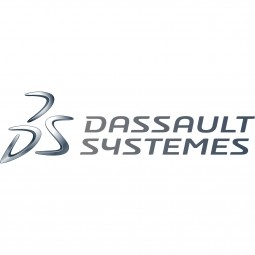技术
- 应用基础设施与中间件 - 事件驱动型应用
适用行业
- 水泥
- 国家安全与国防
适用功能
- 产品研发
用例
- 时间敏感网络
服务
- 培训
关于客户
MAC Design and Build 是一家拥有完全许可和保险的家族式承包企业,生产定制橱柜、家具、门和内置设施,以支持其家庭和商业家具和改造公司。该公司以提供仅受想象力和客户预算限制的室内设计、家具和改造服务而自豪。通过为客户空间设计和创造独特的作品,MAC Design and Build 比依赖标准预制橱柜、家具、门和木制品的传统室内设计和改造公司提供了更大的灵活性和创造力。该公司每天都在处理独特且具有挑战性的项目,那些努力使用标准预制家具来实现其设计愿景的客户可以与 MAC Design and Build 合作,将他们的梦想变成现实。
挑战
MAC Design and Build 是一家家族承包企业,专门为家庭和企业家具和改造服务打造定制橱柜、家具、门和内置设施。该公司以提供独特的室内设计和改造服务而自豪,这些服务仅受客户的想象力和预算的限制。然而,该公司在加速这些定制产品的开发、同时消除错误和降低成本方面面临着重大挑战。该公司最初使用 AutoCAD 2D 设计软件来设计橱柜和木制品,这是公司的核心业务。然而,AutoCAD 的年度许可成本(两个席位大约为 1,200 美元)对于该公司来说太高了。他们需要一种更具成本效益的 2D 解决方案,能够提供与 AutoCAD 相同的功能。
解决方案
MAC Design and Build 决定用 DraftSight Professional 2D 设计软件取代 AutoCAD 2D 软件。在使用免费版本的 DraftSight 软件前六个月后,该公司选择升级到 DraftSight Professional 软件,以利用许多额外节省时间的快捷方式。该软件易于学习和使用,特别是对于那些具有 AutoCAD 经验的人来说,并且以极低的价格提供了 AutoCAD 的所有功能。两个 DraftSight 年度许可证的费用约为 200 美元,而两个 AutoCAD 许可证的费用为 1,200 美元,采用 DraftSight Professional 软件而不是 AutoCAD 的决定使公司的年度 2D 设计应用程序成本降低了 83%。由于 DraftSight Professional 软件直观且与 AutoCAD 相似,该公司无需任何正式培训即可立即开始使用。
运营影响
数量效益

Case Study missing?
Start adding your own!
Register with your work email and create a new case study profile for your business.
相关案例.

Case Study
System 800xA at Indian Cement Plants
Chettinad Cement recognized that further efficiencies could be achieved in its cement manufacturing process. It looked to investing in comprehensive operational and control technologies to manage and derive productivity and energy efficiency gains from the assets on Line 2, their second plant in India.

Case Study
Data Capture for Afghanistan Forces
Electronic equipments on the field of Afghanistan provided information on the status of the vehicle and to identify potential threats surrounding it to the British Force. The monitoring and interpretation of this data requires robust and sophisticated digitization for data capture and communication.

Case Study
Digital Transformation of Atlanta Grout & Tile: An IoT Case Study
Atlanta Grout & Tile, a Tile, Stone & Grout restoration company based in Woodstock, Georgia, was facing challenges with its traditional business model. Despite steady growth over the years, the company was falling behind the web revolution and missing out on the opportunity to tap into a new consumer base. They were using independent software from different vendors for each of their department information and workforce management. This resulted in a lot of manual work on excel and the need to export/import data between different systems. This not only increased overhead costs but also slowed down their response to clients. The company also had to prepare numerous reports manually and lacked access to customer trends for effective business decision-making.
Case Study
Enhancing Security and Compliance in Remitly's Global Money Transfer Service with Fastly
Remitly, an online remittance service, was faced with the challenge of securing its proprietary global transfer network. The company needed a security solution that could meet PCI requirements and protect customers' sensitive transactions through its mobile application. The solution had to be capable of defending against new and emerging attack types without impacting performance. Remitly also had to deal with irregular traffic patterns, such as a sudden spike in account transfers from a small network segment on the Pacific coastline of South America. The company needed to determine in real time whether such traffic indicated an attack or valid requests. A traditional web application firewall (WAF) would not be able to distinguish this traffic, potentially leading to customer frustration if the IP was blacklisted.

Case Study
Major Aerospace Company Automates Asset Management
The O&M division of an aerospace and global security company was using spreadsheets to manually track more than 3,000 assets assigned to students and staff. Maintaining audit trails for this high volume of equipment became increasingly time-consuming and challenging. The chore involved knowing precisely what equipment was on hand, what had been issued, its location and the name of the custodial owner of each item. Every aspect of this task was carried owner of each item. Every aspect of this task was carried out by individuals with spreadsheets. Manually documenting the full lifecycle of each asset added to the burden. This included tracking maintenance requirements and records, incidents and damages, repairs, calibrations, depreciation, and end-of-life data.








